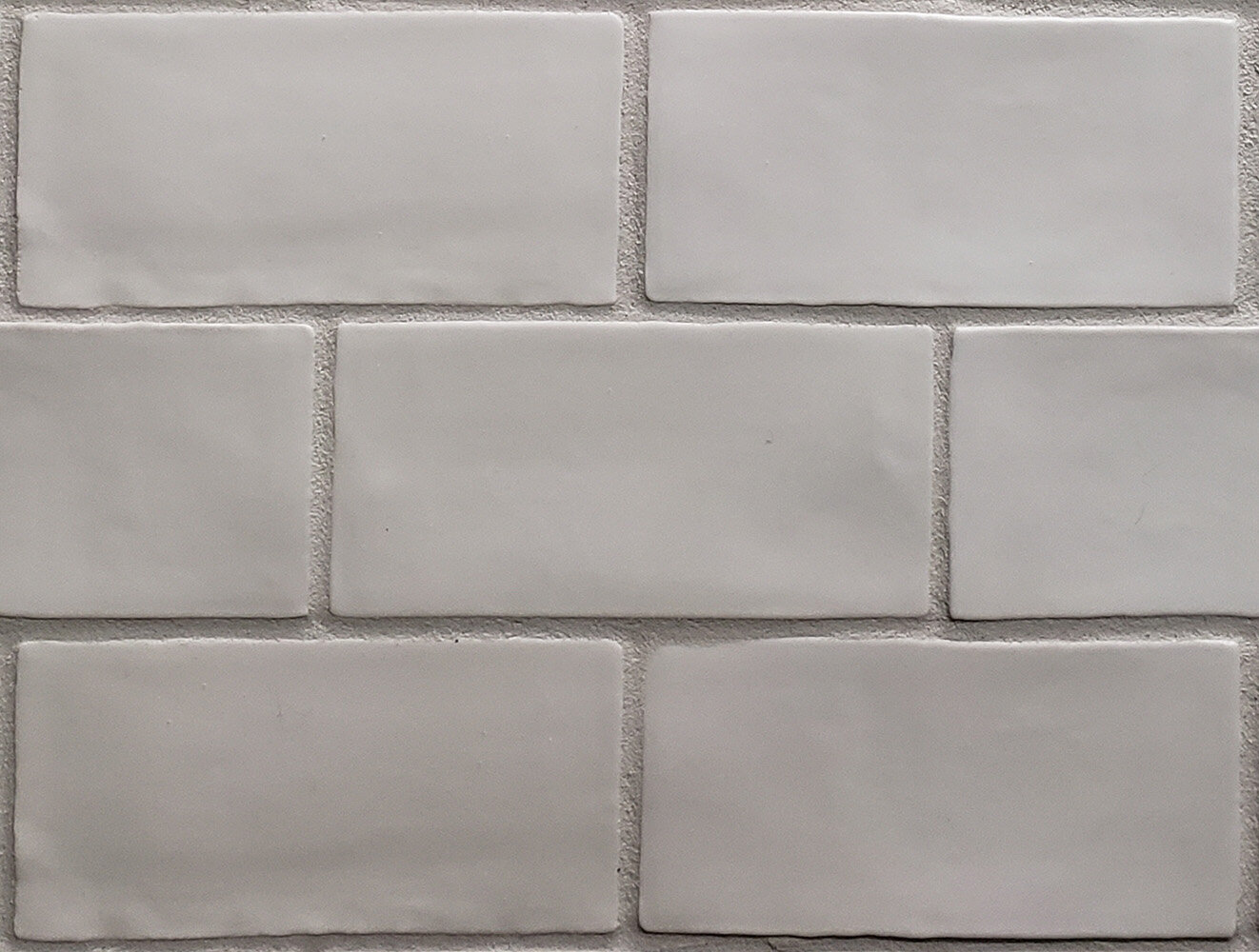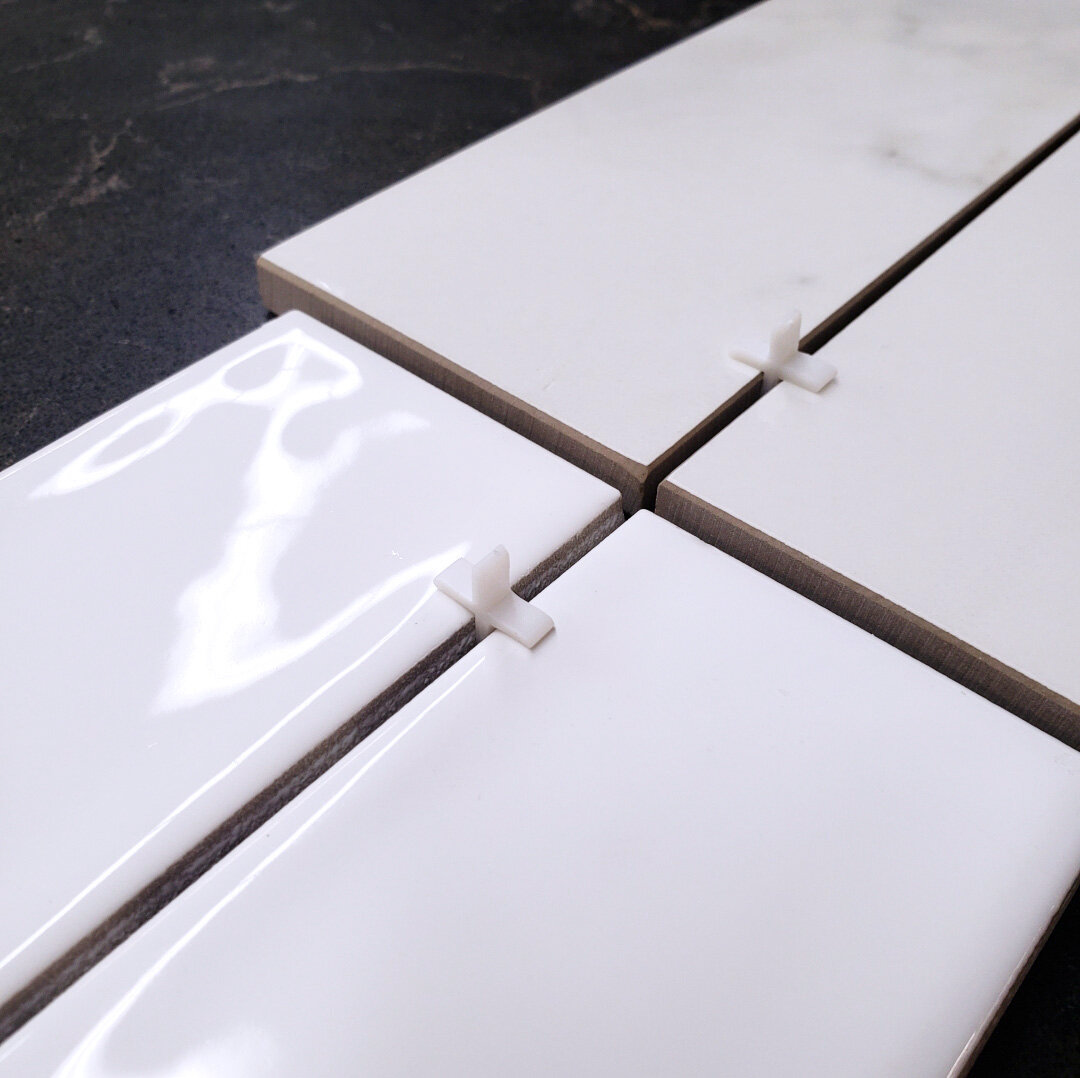Average Width of Grout Joints on Back Splash
What Size Grout Line?
Escher Smoke mosaic with Dimensions Onyx glass grout.
If you have tile, you need grout. Grout serves two major functions:
-
Grout absorbs movement from the natural contraction and expansion your tiles will experience from temperature and humidity changes. Without grout, your tiles could buckle and come loose.
-
Grout seals up the space between tiles so that dirt and spills stays on the surface where they can be easily cleaned up. Without grout, messes and germs can slip through the cracks and cause problems.
Many people who like tile don't like large, deep grout lines. However, with modern tile technology, you can have tiny grout lines for a clean, modern look.

Why use old-fashioned giant grout lines in the first place?
Before the technological advancements of modern tile making, porcelain and ceramic tiles were highly irregular (some cheaply-made modern tiles still are). Tiles from the same box could be slightly bigger or smaller than one another, without perfect right angles. Large grout lines, around 1/2" or more, were used to camouflage these irregularities.
It's much harder to pick up on a 1/16" size difference between tiles when they're 1/2" apart. Many older tile installations have smaller tiles (6"-12") with large grout lines, and as such wide grout lines tend to look old-fashioned.

Irregular Edges for a Hand-Crafted Look
Some tiles are irregular by design, not subpar manufacturing. Uneven edges can create an old-world look, but this also means the tiles cannot be right next to each other. Usually these tiles are set a little further apart, such as a 1/8"-3/16" grout line.
Tremble White 3x6" ceramic tiles
Rectified vs. Pressed Tile Edges: an Optical Illusion
Pressed tiles are shaped and then fired. They tend to have a slightly rounded pillow edge.
Rectified tiles are fired and then the edges are cut off, leading to a very precise, square edge.
If you set a pressed tile and a rectified tile with the same size grout line, the rectified tile's grout line will appear smaller. The rounded edges of the pressed tile can extend the reach of the grout, like water lapping at a riverbank.
To create the illusion of smaller grout lines, get a tile with a rectified edge.
Similarly, the rounded edges of tumbled or chiseled natural stone tiles make their grout lines look larger, while natural stone tiles with a square edge will help the grout line look smaller.

Rectified tile with 1/16" grout spacer. You can see the saw marks where the tiles were cut to size, as well as the micro bevel to smooth out the cut edge.

Pressed tile with 1/16" grout spacer. Notice how the sides taper in to the face of the tile.

Once grouted, the line between the pressed tiles will look larger than the same sized line between the rectified tiles.
A Credit Card-Sized Grout Line: How small can we go?
"I want a grout line no bigger than a credit card!" Sorry, but a 1/32" grout line will lead to failure. Grout lines need to be at least 1/16" for the grout to even fit, and often larger than that depending on a variety of other factors. For some grouts, like sanded cement grout, 1/8" is the minimum line size. Failure to have at least the minimum space between tiles will make it harder to install the grout properly, leading to holes and leaks in the grout or tiles expanding and buckling.

These tiles were set outside with tiny grout lines. Once the sun hit them, they heated up, expanded, and buckled.
Larger Tile, Larger Grout Lines
A larger tile requires more room for contraction and expansion. A 24x48" tile needs a 3/16" grout line, but a 3x6" subway tile can be set with a smaller line.
Smaller Space, Smaller Lines
If you're setting tiles on an 18" tall, 6' wide kitchen backsplash, you don't need as much wiggle room as a 10x20' floor. You can get away with smaller grout lines in a smaller space, even with the same tile.
Use Wider Lines Outside
With tiles set outside, such as on a patio or porch, you'll need wider grout lines to accommodate the more dramatic temperature changes your tile can experience. An 1/8" grout line is too small.
If all else fails, check the Manufacturer's Recommendations
Tiles must go through rigorous testing to see how they will hold up in various installations. A porcelain tile rated for heavy foot traffic will have different clay than a decorative ceramic wall tile.
As a result of this testing, the tile manufacturer will often have a recommended grout size. Sometimes it's printed on the box, sometimes you have to ask you tile dealer what the recommended grout size is.
So what grout line size should I use?
If you're working in a small area with a small tile, such as a 3x12" subway tile on a backsplash or fireplace surround, you can usually have small 1/16" or 1/8" grout lines. However, if you're going for an old world, farmhouse, or Mediterranean design, especially with hand crafted-looking tiles, a wider 3/16" grout line will give you that vintage aesthetic.
If you're covering a larger area, such as a floor or shower wall, look at the size of your tile. A small 3x6" tile can be set with a 1/16" or 1/8" line, while a mid-size tile like 6x12" or 13x13" would be better with an 1/8" grout line. A large tile, such as 12x24", usually requires a 3/16" grout line, so it's best to check the manufacturer's recommendations to see how small you can go.
Read more about grout:

Grout Basics

No More Dirty Grout

Choosing a Grout Color
About the Author: Kathryn Helbling has been a Tile Lines designer and product expert for 10 years, in addition to designing and managing the Tile Lines website.
Average Width of Grout Joints on Back Splash
Source: https://www.tilelines.com/design/groutsize
0 Response to "Average Width of Grout Joints on Back Splash"
Publicar un comentario